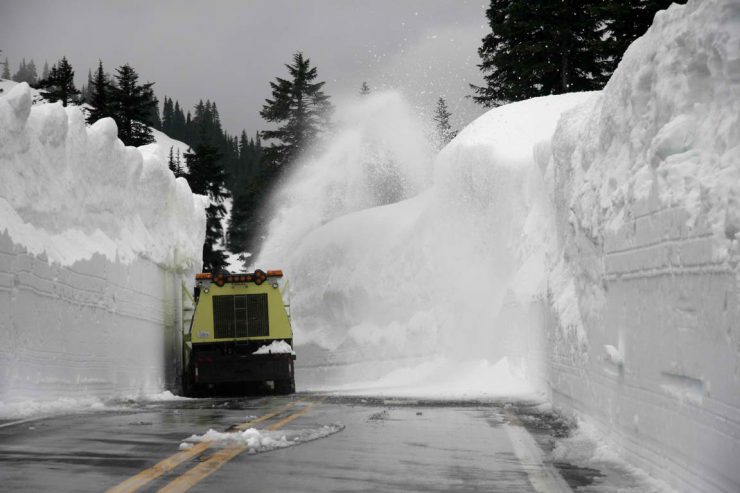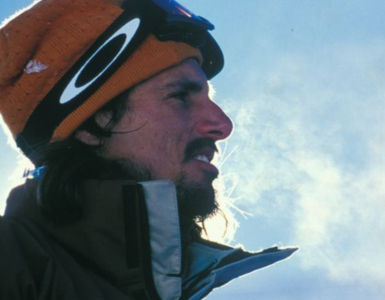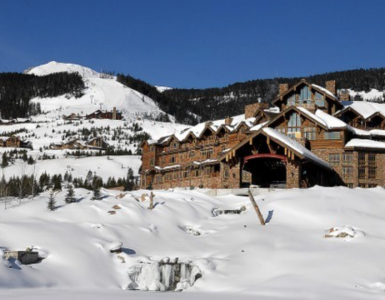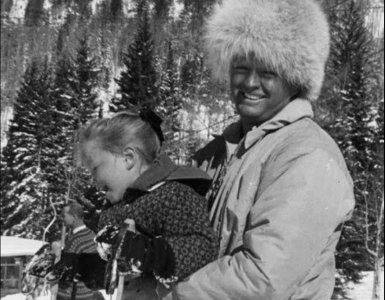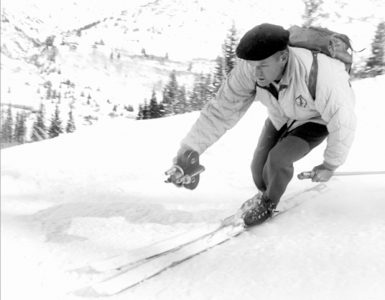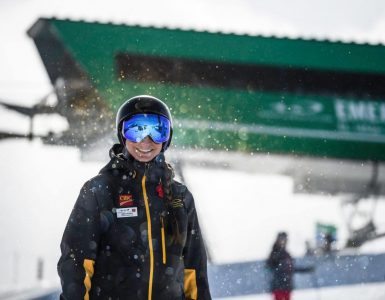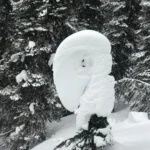By Warren Miller
 Anyone who skis knows that snow will always be a safe topic of conversation. We can talk about it if there isn’t enough of it, if there is too much of it, if it’s too wet, too unstable, too tracked up, too heavy. We never tire of describing the snow we have, the snow we wish we had and the snow that is supposedly on the way. Among the ski resorts, there are the haves and the have-nots: those who have snow and those who do not have snow.
Anyone who skis knows that snow will always be a safe topic of conversation. We can talk about it if there isn’t enough of it, if there is too much of it, if it’s too wet, too unstable, too tracked up, too heavy. We never tire of describing the snow we have, the snow we wish we had and the snow that is supposedly on the way. Among the ski resorts, there are the haves and the have-nots: those who have snow and those who do not have snow.
This year is no different. Goofy weather patterns? You bet. Blame it on El Nino, the stock market, the price of bananas, whatever you care to, but we all know by now that this is the winter of records (until next year anyway). More snow fell in Vail by Thanksgiving than since the resort was built, Mammoth got eight feet of snow overnight in early November and Montana is suffering the driest winter since 1896.
Every ski season, there are ski resorts that make the news because they either have a lot of snow or no snow. Four years ago, Mt. Baker, Washington received 99 feet of snow during the winter. In late spring, there were still snow banks 60 feet high around the parking lot. Just try to imagine what your favorite ski resort would look like if it received 99 feet of snow. It would resemble an artic wasteland unless there were buildings as tall as 100 feet, or at least 10 stories high.
In about 1953 or 1954, the Sierra Nevadas received an awesome storm. It snowed 10 feet and then it rained eight inches on top of that. Around Lake Tahoe, over 100 cabins, homes, and commercial buildings just collapsed under the weight of the snow. That spring, I took movies of automobiles that had been buried in the storm. All four of their tires were flat and their roofs had been crushed right down to the level of the hood and the trunk.
In 1981, I was staying in a condo at Mammoth and watched the snow fall for three days until it was up above the tops of the windows of my second floor digs. When I finally dug my way outside, I could not find my van. That’s right, the bulldozers were working their way down from the snow level to the ground and had been driving right over it.
As usual, the natives had an even better story about a fierce Sierra storm in the early 1950’s when a bulldozer uncovered a Volkswagen bug. Further digging by the bulldozers revealed that it had been parked on top of two feet of snow on top of a Buick sedan. During that same storm, a tour bus was lost for three days after the snowstorm let up. However Dave McCoy’s staff had the lifts running so the people could have a good time skiing while they were paying someone to locate and dig out their car. The occasional bumper was torn off and more than a few fenders where dinged by the bulldozers moving snow.
Everyone has a theory about what affects the snowfall and how to predict it. I remember the fall of about 1958 when a bunch of ski shop owners were trying to beat me down in price to use my ski footage on their TV shows. They were all talking about how the length of hair on the chipmunks and how many nuts the squirrels were putting away indicated a good winter coming up.
My response was, “I went surfing this morning and the water here in Manhattan Beach was three or four degrees warmer than it normally is this time of the year. If it stays that warm, the skiing in Southern California will be terrible.” The local ski resorts operated eight days that winter. (This was before they had snowmaking machinery.)
Is it possible that the temperature of the Japanese current controls where and how much snow falls in the west as the current sweeps south down the west coast?
I definitely think it is.
What if a person could predict the amount of snowfall in British Columbia, Montana, California or Colorado by the temperature of the Sea of Japan where the Japanese current originates during the hot months of the summer before the snow falls?
Perhaps someday we will have the ability to accurately predict, to date this winter is a poor example of snowfall forecasting!



